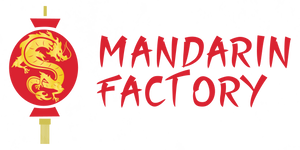Hanfu
Looking for a traditional Chinese costume? This traditional dress what is Hanfu is your best choice. Hanfus are elegant, refined, comfortable and perfect for grand ceremonies and grand occasions. If you prefer the less flashy style opt for our Chinese jackets.
History of Hanfu
Hanfu (汉服) is a traditional Chinese clothing that is often confused with a kimono Japanese by Westerners. It looks more like a tunic than a dress. In reality, hanfu literally means "clothing of the Han", as it was popularized by this ethnic minority. According to historians, Hanfu have more than 3,000 years of history behind them, and were invented by Empress Leizu, the wife of the Yellow Emperor. She preferred silk, which was more refined and sophisticated.
To be exact, the original and most basic form of Hanfu was developed over three thousand years ago, during the Shang Dynasty (1600 to 1046 BC). At that time, basic Hanfu was mainly made of Chinese silk, highly regarded for its quality and colored mainly in green and red. The "original" Hanfu consisted of three main elements:
- Yi: knee-length tunic with narrow cuffs, tied with a belt
- Chang: A narrow ankle skirt
- Bixi: a knee-length fabric panel attached from the waist
Hanfu has evolved considerably from its earliest form after all these centuries. The Western Zhou Dynasty (1045 - 771 BC) introduced a class system. The more social status The higher the status of a person, the more decorations and accessories the dress had. Social rank also affected the width of the sleeves and the length of the skirt.
It was not until the Eastern Zhou Dynasty (770-256 BC) that the “shenyi” was introduced as an important part of Hanfu. The shenyi (深衣), literally translated as "deep robe", is a long, loose garment with a wedge-shaped left side. The shenyi was worn by everyone, regardless of gender and class, and has been an important part of Hanfu clothing to this day.
Hanfu declined in popularity during the Qing Dynasty (1644-1911), when the minority Manchu people ruled China, and thus became part of Manchu fashion (mainly the Qipao or Cheongsam). Then, after the collapse of the Qing Dynasty, with the communist regime, China adopted mainly modern Western-style clothing, and Chinese clothing traditions were gradually lost.
The Hanfu a unique piece
Hanfu is generally decorated with a multitude of ornaments, each more elegant than the last: embroidery on a very noble fabric, accessories… The hanfu is characterized by a diagonal collar with a lapel, and a belt that allows it to be closed. It is a wide garment, generally with long sleeves, with a lot of draping, which is very comfortable to wear. It can be made of silk, cotton, linen or even wool, and dyed with natural pigments. It is often decorated with traditional motifs and symbols, such as the sun, the phoenix, the tiger, the imperial dragon, flowers, or even birds.
For all these reasons, a Hanfu will be a real collector's item in your wardrobe: making a Hanfu is a real art ! Our hanfus are made according to Chinese know-how by Chinese craftsmen. In this collection, there is a garment for women but there are also hanfus for men, which were once worn by high-ranking men and then became democratized to everyone.
Hanfu back in fashion?
Yes, traditional Hanfu from the time of the Hans are indeed back in fashion. fashion ! In recent years, there has been an increase in young people wearing Chinese costumes for festivals such as Valentine's Day or the Lantern Festival. Others wear them daily to go to university. This increase in Hanfu by the younger generations is linked to the fact that this younger generation is trying to reconnect with the culture of their ancestors. For most of them, when they wear Hanfu, they have a strong sense of belonging and show a deep respect for traditional Chinese culture. In addition, the elegance of this Hanfu fits very well with the times and some even organize weddings in Hanfu, as in the Ancient China.



























